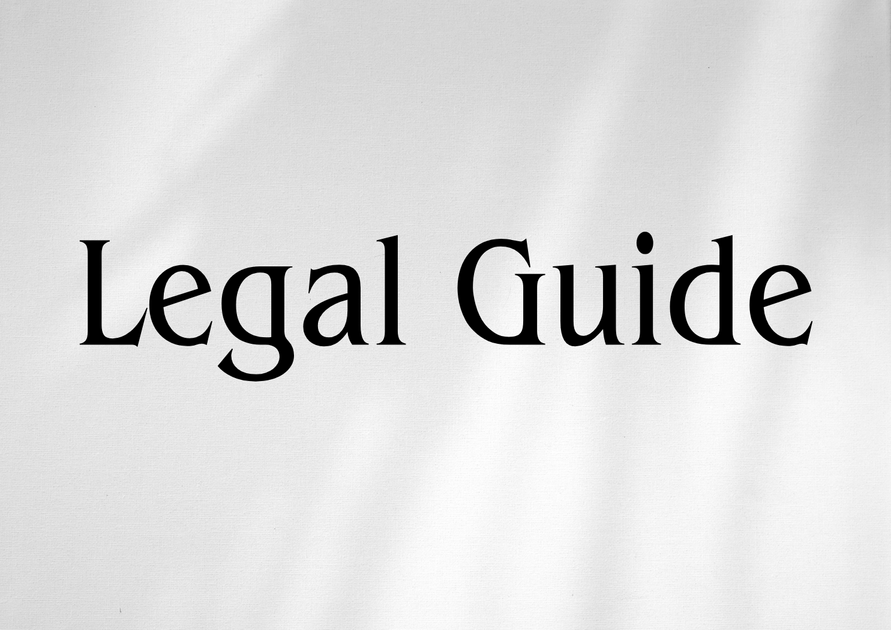Introduction: The Strategic Importance of Contract Termination in Saudi Arabia for UAE-Based Businesses
In recent years, as UAE businesses deepen their commercial ties with the Kingdom of Saudi Arabia (KSA), understanding the legal nuance of terminating business contracts within Saudi jurisdiction has never been more vital. For UAE-based companies, executives, and legal advisors, the landscape is evolving rapidly in light of new regulatory reforms shaping the Gulf’s commercial ecosystem. Termination of a business contract is more than a procedural step; it is a strategic maneuver that can mitigate risk, preserve reputation, and ensure regulatory compliance across borders.
This article aims to provide comprehensive, consultancy-grade legal guidance on the lawful termination of business contracts in Saudi Arabia from a UAE legal perspective, referencing key Saudi statutes while aligning with best practices expected by the UAE Ministry of Justice and prevailing international commercial norms.
From an executive planning a cross-GCC expansion to HR managers navigating workforce realignment, or legal practitioners tasked with compliance, this resource delivers pragmatic insight framed by the latest legal developments—including recent updates to the KSA Civil Transactions Law and ongoing GCC harmonization efforts. In this high-stakes environment, missteps in contractual terminations can translate to litigation, penalties, or even blacklisting from future tenders, underlining the imperative for expert-backed legal strategy.
Table of Contents
- Legal Framework: Key Saudi Statutes and Their Relevance to UAE Businesses
- Grounds for Termination: Statutory and Contractual Provisions
- Procedural Steps Required for Lawful Termination
- Comparing Old and New Saudi Contract Termination Rules
- Case Studies and Hypothetical Illustrations
- Risks of Non-Compliance and Proactive Compliance Strategies
- Operational Guidance for UAE Businesses in Saudi Arabia
- Professional Recommendations and Best Practices
- Conclusion: Future Trends and How to Stay Proactive
Legal Framework: Key Saudi Statutes and Their Relevance to UAE Businesses
The Saudi Civil Transactions Law (Royal Decree M/191 of 2023)
The backbone of business contract law in Saudi Arabia is found within the newly enacted Saudi Civil Transactions Law (Royal Decree M/191, promulgated in 2023). Echoing practices in the UAE, this law modernizes and codifies previously uncodified contractual relationships, providing a comprehensive platform for resolving contract disputes and terminations. UAE stakeholders operating in or with Saudi partners must recognize that, unlike the UAE Civil Code (Federal Law No. 5 of 1985), Saudi law does not permit parties to simply ‘walk away’ from a contract at will unless expressly stipulated within the agreement or provided by statute.
Complementary Legislation
- Saudi Companies Law (Royal Decree M/132 of 2022): Governs company obligations and contractual relationships; relevant for distribution, agency, and JV contracts.
- Saudi Labor Law (Royal Decree M/51 of 2005, amended): Relevant for HR managers handling employment-related terminations attached to broader business contracts.
- Commercial Agencies Law (Cabinet Decision No. 120 of 2022): Key for those terminating exclusive distribution or agency agreements, with mandatory notice and indemnity requirements.
Relevance for UAE Businesses
Saudi contract law is increasingly harmonized with international—you could even say “UAE-like”—norms, especially regarding notice periods, penalties, and force majeure. Crucially, Saudi courts honour express choices of law and dispute resolution clauses where the parties have been clear and such clauses do not contravene Saudi public policy.
Grounds for Termination: Statutory and Contractual Provisions
Statutory Grounds
Saudi law recognizes the following core grounds for contract termination:
- Material Breach: If one party fundamentally breaches their contractual obligations.
- Mutual Agreement (Termination by Consent): Parties may mutually rescind or terminate a contract at any time.
- Force Majeure or Frustration: Unforeseeable events making contract performance impossible or unlawful.
- Expiry of Term or Fulfilment of Condition: Contracts terminate naturally upon completion of the agreed objective or expiration of their stated period.
Contractual Provisions
Termination rights and processes often hinge on specific contractual provisions. Under Saudi law (and matching best practices in the UAE), ‘termination for convenience’ is not automatic unless expressly stated. Thus, boilerplate UAE contract templates may need careful tailoring for the KSA market.
| Clause Type | Recognized? | Special Requirements |
|---|---|---|
| For Cause (Failure to Perform) | Yes | Requires formal notice and opportunity to cure (unless severity justifies immediate action) |
| For Convenience | Only if expressly drafted | Notice period; may require payment of compensation/liquidated damages |
| By Mutual Consent | Yes | Typically documented in writing, signed by both parties |
| Automatic/Expiry | Yes | Subject to clear contract language |
Practical Consultancy Insight
Key point for UAE legal practitioners: There is no absolute statutory ‘right to terminate’ for all contracts under Saudi law as there may be under certain circumstances in the UAE. Ensure all UAE-KSA contracts clearly define the permitted termination grounds, notice mechanics, and liabilities in accordance with contemporary Saudi statutes.
Procedural Steps Required for Lawful Termination
Compliant Termination Process
The process for lawfully terminating a business contract in Saudi Arabia involves:
- Reviewing the Underlying Contract: Analyze the contract for termination clauses, governing law, notice requirements, and any dispute resolution process.
- Ground for Termination: Confirm the legal and factual grounds for termination—material breach, mutual agreement, etc.—supported by evidence.
- Issuing Formal Notice: Serve a detailed written notice of termination, usually stating the grounds and the intended effective date. This is a critical step as Saudi courts look for strict adherence to notice requirements.
- Opportunity to Cure (if contractually mandated): For terminations for cause, the defaulting party must often be given a cure period (e.g., 30 days) before the termination is finalized.
- Mutual Release or Settlement Agreement: Where the parties settle amicably, execute a mutual release (often in Arabic and notarized if possible) to minimise future claims.
- Regulatory Notifications: For regulated agreements (such as commercial agencies or employment relationships), notify relevant government authorities in accordance with applicable statutory requirements.
- Document Retention and Closure: Maintain comprehensive documentation (including notices, correspondence, and settlement agreements) in both Arabic and English for future internal and legal audits.
Documentation: Bilingual Considerations
Saudi authorities and courts often require Arabic-language originals as the official version for litigation. UAE companies should always prepare dual-language documentation and ensure that translations are certified and consistent with the underlying contract.
Common Pitfalls (Consultancy Checklist)
- Omitting or providing defective notice
- Terminating without sufficient evidentiary basis
- Relying on ambiguous ‘template’ contracts not adapted for Saudi requirements
- Failing to notify Saudi agencies where required (e.g., for agency agreements)
Comparing Old and New Saudi Contract Termination Rules
| Aspect | Pre-2023 Law (Uncodified/Customary) | Post-2023 Saudi Civil Transactions Law |
|---|---|---|
| Grounds for Termination | Based on Sharia, broad judicial discretion | Statutorily defined, clearer codification, greater certainty |
| Written Notice Requirement | Not always explicit | Mandatory in most contract types |
| Enforceability of ‘For Convenience’ Clauses | Rarely recognized | Permitted if expressly agreed |
| Role of Language and Documentation | Arabic preferred but less formalized | Arabic required for authorities/courts, strict approach on certified translation |
| Dispute Resolution | Local court default, limited recognition of foreign arbitration | More openness to arbitration/choice of law, subject to public policy |
Case Studies and Hypothetical Illustrations
Case Study 1: Termination for Cause in a Distribution Agreement
A UAE logistics company appointed a Saudi distributor under a five-year contract. After two years, the distributor fails to meet sales targets for three consecutive quarters. The contract permits termination for ‘material breach’ with a 30-day cure period. The UAE firm issues written notice, which the distributor does not remedy. The termination is thus compliant as per the contract—provided all process steps are documented in Arabic and local Saudi regulators (per agency law) are notified.
Case Study 2: Termination by Mutual Consent
Two tech companies, one based in Dubai and the other in Riyadh, jointly develop a product but wish to part ways amicably. Both sign a mutual termination agreement, which includes a release of liability and confirmation of intellectual property ownership. This not only prevents future disputes but is recognized by Saudi law as an effective means of contract closure.
Hypothetical: Failure to Notify Regulator
An Emirati company attempts to terminate a Saudi staffing contract without alerting the Saudi Ministry of Human Resources. As a result, it is liable for unpaid wages and blacklisting from future public contracts. This underscores the necessity of full legal and regulatory compliance, particularly for cross-border HR relationships.
Risks of Non-Compliance and Proactive Compliance Strategies
Legal and Commercial Risks
- Litigation Risk: Unlawful termination commonly results in damages claims, evidence preservation orders, and operational injunctions under Saudi law.
- Penalties and Sanctions: Regulated sectors (e.g., agency or labor) often attract fines, blacklisting, or loss of business licenses for non-compliance with termination rules.
- Reputational Harm: Non-compliance with Saudi norms may hinder future tenders or investment approvals—especially in strategic sectors.
| Risk Area | UAE Law | Saudi Law |
|---|---|---|
| Civil Damages | Permitted; compensation for proven losses (Federal Law No. 5 of 1985) | Expansive, often includes lost profits and consequential damages |
| Industry Blacklisting | Rare, sector-dependent | Common in labor/agency violations |
| Criminal Liability | Possible for fraud or willful deception | Possible where fraud or non-disclosure involved |
Compliance Strategies (Checklist)
- Engage in periodic contract audits with local Saudi legal counsel
- Align termination procedures with latest Saudi and UAE statutory requirements
- Train operations and HR staff on bi-jurisdictional compliance risk
- Prepare bilingual documentation, certified translations, and maintain a ‘termination file’ for each disputed contract
- Formally notify regulators—especially for agencies, employment or franchising contracts
Operational Guidance for UAE Businesses in Saudi Arabia
Drafting and Review Recommendations
Reform-driven both in Dubai and Riyadh, contracting now demands a multi-jurisdictional sensitivity. UAE legal advisors must:
- Customise term sheets and main agreements for Saudi law, not simply ‘mirror’ UAE models
- Include detailed termination provisions (for cause, convenience, notice, cure period, dispute resolution)
- Clarify choice of law, language, venue, and arbitration provisions
- Retain flexibility for mutual termination and outline clear compensation/liability regimes
- Address regulatory notification triggers and submission requirements
Engagement with Local Counsel and Regulators
UAE firms should involve Saudi-licensed legal professionals prior to executing or terminating contracts. Any regulatory filings or settlement agreements should be reviewed locally to meet changing administrative requirements.
Professional Recommendations and Best Practices
- Do:
- Adopt a contract-by-contract approach, never assuming UAE standards automatically apply in Saudi Arabia
- Audit contractual and regulatory requirements at least annually
- Document all communication and process steps in Arabic and English
- Build in mediation or arbitration escalation before heading to Saudi courts
- Maintain internal compliance checklists, especially for sectors with a high incidence of dispute (agency, labor, franchising)
- Don’t:
- Rely on unilateral contract templates without Saudi-specific adjustment
- Neglect the need for certified translations or regulatory notifications
- Assume verbal agreements or informal settlements will be sufficient without formal documentation
Compliance Process Flow Diagram (Suggested Visual)
Suggested placement: A diagram illustrating the lawful contract termination pathway: Step 1 > Contract Review – Step 2 > Legal Ground Assessment – Step 3 > Issue Formal Notice – Step 4 > Cure Period (if any) – Step 5 > Regulatory Notification – Step 6 > Mutual Release – Step 7 > Documentation/Closure.
Conclusion: Future Trends and How to Stay Proactive
The evolving legal framework in Saudi Arabia, especially following the 2023 Civil Transactions Law, substantially elevates the requirements for contract termination, demanding precision, bilingual documentation, and regulatory engagement. For UAE-based entities operating in, or entering into contracts with, Saudi counterparties, the stakes are higher than ever, and legal missteps can have long-term commercial consequences.
As regulatory harmonization between the GCC states accelerates post-2025, businesses should expect enhanced scrutiny, more cross-border enforcement, and greater emphasis on formal contract administration. Proactive legal audits, robust contract drafting, bilingual records, and regulatory diligence will be the keys to success. UAE executives, HR managers, and legal advisers must partner with trusted cross-border consultants to ensure continued compliance in this fast-shifting landscape.
In essence, treating Saudi contract termination as a strategic, highly regulated process secures your organization’s position in the region’s most dynamic commercial marketplace—today and into the future.



